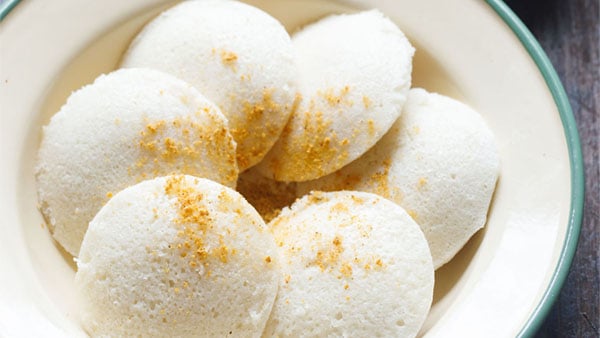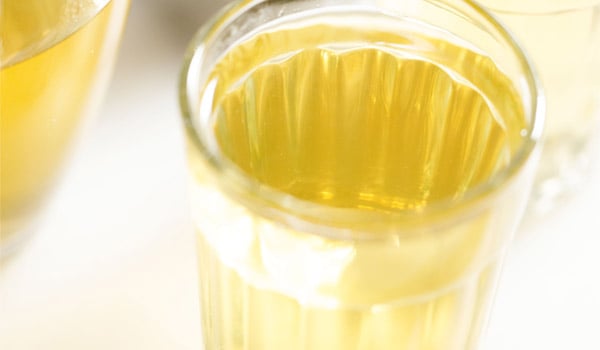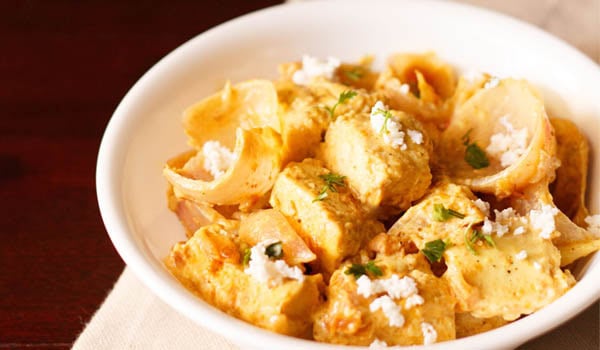Idli: A Classic South Indian Breakfast
Idli is a beloved South Indian breakfast dish made from a fermented batter of rice and urad dal (hulled black gram), steamed into soft, airy, and spongy cakes. Typically served with Coconut Chutney and Sambar, it offers a nutritious and satisfying meal. Renowned for its health benefits, idli is a popular choice among breakfast options. Here, I present a foolproof recipe complete with a video and step-by-step photos to guide you in making the perfect idli. This recipe has been a staple on the blog and has been tried and tested with great success by many readers.
Soft Idli Made the Traditional Way
Idli isn’t merely food; it’s a cherished memory. Growing up, Sundays at home meant the comforting ritual of idli-making. My mother would soak rice and urad dal during the day, and by night, the familiar whirr of our old Sumeet mixer would fill the kitchen as she ground the batter.
The earthy aroma of freshly ground urad dal was distinct and comforting. Even today, as I prepare the batter, I’m transported back to those evenings, watching her pour the thick mixture into a large bowl, gently mixing in salt, and setting it aside to ferment overnight.
Sunday breakfasts were a celebration of soft, steaming hot idlis, sometimes followed by crisp dosas made from the same batter. Any leftovers would magically transform into delicious uttapams or paniyarams the next day. This simple, soulful food was made with love, a rhythm I continue in my kitchen today. Along with those memories, this recipe combines time-tested techniques and careful fermentation, ensuring your idlis turn out soft and fluffy every time.
Idli is my comfort food—simple, nourishing, and timeless. Naturally vegan, gluten-free, and light on the stomach, it stands out as one of the healthiest breakfast options available. This classic South Indian dish has garnered fans not only across India but around the globe.
Overview of the Idli Making Process
Making idli the traditional way involves four essential steps: soaking, grinding, fermenting, and steaming. While shortcuts exist, nothing compares to the soft texture and light tang of properly fermented homemade batter.
There are two time-tested approaches: one using idli rice and the other using idli rava. Both methods yield excellent results and follow the same foundational technique.
1. Idli with Rice and Urad Dal
This classic version utilizes idli rice paired with hulled urad dal (black gram). Idli rice refers to parboiled rice, traditionally used to create soft idlis. You can choose between whole or split urad dal, ensuring they are fresh for optimal fermentation. Aged lentils do not ferment properly and can result in dense idlis.
Some cooks prefer short-grain varieties of raw rice, such as parmal rice or sona masuri rice, which also yield a soft texture. The batter is ground to a fine consistency and mixed with salt before fermentation.
2. Idli with Idli Rava
A slightly easier method employs idli rava, which is coarsely ground parboiled rice. This approach skips the rice grinding step, making it quicker while still producing soft, fluffy idlis. Simply soak the rava and urad dal separately, grind only the dal, then mix and ferment.
Soaking, Grinding & Fermentation Tips
Each stage is crucial for achieving perfect idlis—soft, spongy, and light.
1. Soaking Tips
Rinse both rice and dal thoroughly and soak them separately for 4 to 5 hours. Fresh urad dal is essential for optimal fermentation, as poor-quality or aged dal can lead to chewy, flat idlis.
2. Grinding Methods
a) Stone Grinder: Ideal for large batches, producing fluffier batter with better fermentation. Gradually add water—around 1 cup for ½ cup urad dal and 1.5 to 2 cups for 2 cups soaked rice.
b) Mixer Grinder (Mixie): Best for smaller batches. A high-speed blender, like a Vitamix, works well with careful technique.
Personally, I use the stone grinder for larger quantities and the mixie for everyday batches. Both methods yield excellent results when the correct ratios are used, and proper fermentation time is allowed.
3. Fermenting the Batter
Once ground, combine the rice and dal batters thoroughly. Cover and let it ferment for 8 to 12 hours or overnight in a warm place. A well-fermented batter will double (or even triple) in volume and have a mildly sour aroma—perfect for idli.
The fermentation process occurs naturally due to wild yeast and lactic acid bacteria present on the rice and urad dal. As they multiply, they release gases and acids that help the batter rise, giving idlis their characteristic soft and spongy texture.
4. Steaming the Perfect Idlis
Idlis are steamed in greased idli moulds placed in a steamer or pressure cooker (without the weight/whistle). Spoon the batter into the moulds and steam until set.
Steam the idlis for 12 to 15 minutes; avoid over-steaming, as it can make them dry or dense. To check for doneness, insert a toothpick—it should come out clean.
Step-by-Step Guide: How to Prepare Traditional Idli at Home
Soak the Rice, Lentils & Poha
- In a bowl, combine 1 cup parboiled rice and 1 cup regular rice (I used sona masuri rice along with parboiled rice). Alternatively, you can use 2 cups of idli rice or parboiled rice.
- Rinse both rice varieties a couple of times in fresh water, then drain and set aside.
- In a bowl, take ¼ cup thick poha (flattened rice). Poha helps make the idli soft and fluffy; you can skip it if unavailable.
- Rinse the poha with fresh water once or twice.
- Add the poha to the rice along with 2 cups of water. Mix well and cover to soak for 4 to 5 hours.
- In a separate bowl, combine ½ cup urad dal with ¼ teaspoon fenugreek seeds (omit fenugreek if unavailable).
- Rinse the urad dal a couple of times in fresh water, then soak it in 1 cup of water for 4 to 5 hours.
- Before grinding, drain the water from the urad dal but reserve it for later use.
Grind Rice and Urad Dal Separately
- In a wet grinder jar, add the urad dal and initially add ¼ cup of the reserved water.
- Grind the urad dal for a few seconds, then add another ¼ cup of reserved water and continue grinding until you achieve a light and fluffy batter.
- Transfer the urad dal batter to a deep pan or bowl.
- Drain the water from the rice and poha, then add them to the wet grinder or a powerful blender. Grind in batches if necessary.
- Use the reserved urad dal water or fresh water to grind the rice and poha, adding water gradually. Aim for a fine rava-like consistency or a smooth batter. Typically, ¾ cup of water is needed for grinding rice.
- Combine the rice batter with the urad dal batter in a large bowl.
- Add 1 teaspoon of edible rock salt or pink salt and mix well. If you live in a cool area, add salt after fermentation.
Let the Batter Ferment Naturally
- Cover the bowl with a lid and place it in a warm location for 8 to 9 hours. Avoid using an airtight lid. In colder climates, fermentation may take 12 to 24 hours.
- The next morning, the batter should have fermented and increased in volume, with a pleasant sour aroma and small air pockets.
Steam the Idli to Perfection
- Grease the idli moulds with oil and gently swirl the batter. Avoid over-mixing.
- In a steamer or pressure cooker, add 2 to 2.5 cups of water and bring it to a light boil. Place the idli mould in the steamer or pressure cooker and steam for 12 to 15 minutes.
- Check for doneness by inserting a bamboo skewer or knife; if it comes out clean, the idlis are ready.
- Remove the idli mould from the cooker and avoid overcooking, as this can make them dry.
- Use a spoon or butter knife dipped in water to gently remove the idlis and place them in a warm container.
- Serve the idlis hot or warm with sambar and coconut chutney.
What to Pair With Idli
Idli is most commonly served with coconut chutney and sambar, a classic pairing that enhances its soft, delicate flavor. Traditionally, idli is dunked in hot sambar and enjoyed with generous spoonfuls of chutney on the side.
There are numerous variations of both sambar and chutney to try, from thick hotel-style Tiffin Sambar to thinner homestyle versions. You can also serve idli with chutneys like Onion Chutney, Tomato Chutney, or Peanut Chutney for added variety.
For a quick accompaniment, Idli Podi—a dry lentil-based spice mix mixed with ghee or sesame oil—makes for a delicious option. In some households, idli is served with tempered and spiced curd, creating a comforting combination.
Storing Idli and Batter the Right Way
Leftover idlis can be stored in the refrigerator for up to 2 days. Place them in an airtight container and reheat by steaming or microwaving with a sprinkle of water to restore their softness.
Idli batter can be stored in the fridge for 3 to 4 days. Keep it in a covered container and allow it to reach room temperature before use. Gently stir the batter before making idlis to retain the air bubbles formed during fermentation.
If you wish to store the batter for a longer period, it can be frozen for up to 1 month. Use airtight, freezer-safe containers, leaving some space for the batter to expand. Thaw the batter overnight in the fridge or at room temperature before use, keeping in mind that frozen batter may yield slightly less airy idlis compared to freshly fermented batter.
Creative Variations You Can Try With the Batter
Once you master the basic idli batter, there are countless ways to customize it. You can add lentils like moong dal for Moong Dal Idli or incorporate millets and millet flours for a healthier twist. Including thick poha results in incredibly soft and fluffy Poha Idli.
For gluten-free options, adding millets like ragi works well. Oats can also be included for added fiber, and a Quick Oats Idli recipe is perfect for busy mornings. Explore unique regional takes like Kanchipuram Idli, spiced and steamed in banana leaves, or Thatte Idli, a large, flat idli from Karnataka.
Don’t hesitate to experiment with different proportions, additions, and techniques to discover what yields the best texture, taste, and fermentation in your kitchen.
Expert Tips
Idli-making was a weekend ritual in my childhood. Each Sunday meant hot idlis or soft dosas with chutney and sambar. After some trial and error, I learned what works best.
- Adding Poha: Incorporating thick poha or cooked rice into the batter enhances texture. This step is optional but makes a noticeable difference.
- Steaming in Muslin: Consider steaming idlis on a damp muslin cloth for a smooth, soft surface.
- Fermentation: Ensure the batter ferments well, resulting in a pleasant, mildly sour aroma and visible rise.
- Rice Type: Use idli rice or a mix of parboiled rice and raw rice for optimal results.
- Lentil Freshness: Always use fresh urad dal; aged lentils can lead to dense idlis.
- Water Proportion: Maintain the right water balance in your batter; neither too little nor too much is ideal.
- Multipurpose Batter: The batter is versatile—make idli one day, and dosa, uttapam, or appe the next.
Fermentation Help – How to Fix Batter That Won’t Rise
Fermentation is crucial for achieving soft, light, and fluffy idlis. For proper fermentation, a warm temperature is essential, especially in colder climates. Here are some tips:
- Keep the batter warm: Place it near a heater or in a slightly preheated oven.
- Avoid salt during fermentation in winter: Salt can slow down fermentation, so add it after the batter has risen.
- Add a pinch of sugar or use fenugreek seeds: Sugar can help kickstart fermentation, while fenugreek seeds boost natural bacteria and yeast.
- If the batter hasn’t risen: Stir in a small amount of instant yeast dissolved in water after 12 to 14 hours if there’s no rise.
- As a last resort, add baking soda: Use this only if fermentation fails completely.
- Check your urad dal batter: Ensure it’s ground until very fluffy and light for better fermentation.
- Water ratio matters: Avoid using too little water, which can lead to a thick, dense batter.
- Use an Instant Pot in cold climates: Place a small trivet in the Instant Pot steel insert, set the batter bowl on it, and ferment using the yogurt setting.
Idli Batter vs Dosa Batter – What’s the Difference?
Though both batters share the same ingredients, idli and dosa batters differ in consistency. Idli batter is thicker and needs to hold its shape when poured into moulds, while dosa batter should be slightly thinner for easy spreading on a hot griddle. Typically, a 4:1 ratio of rice to urad dal works for idli, whereas a 3:1 ratio is ideal for dosa. Interestingly, you can use the same 4:1 idli batter to make dosa by thinning it slightly with water after fermentation.
Creative Ways to Use Leftover Idlis
Leftover idlis can be transformed into quick snacks or lunchbox recipes. Here are some creative ideas:
- Fried Idli: Shallow-fry or deep-fry leftover idlis until golden and crisp, serving with chutney or ketchup.
- Masala Idli: Cube idlis and sauté them in a spicy onion-tomato masala with curry leaves and spices.
- Idli Upma: Crumble idlis and sauté with mustard seeds, green chilies, curry leaves, and onions for a quick dish.
- Chilli Idli: Stir-fry cubed idlis with capsicum, onion, soy sauce, and green chilies for a desi-Chinese twist.
- Podi Idli: Toss warm idlis in a mixture of idli podi and sesame oil or ghee for a flavorful snack.
- Idli Manchurian: Pan-fry idli pieces and coat them in a sweet, tangy Manchurian sauce for an Indo-Chinese appetizer.
Your Idli Questions Answered
How do I know if my idli batter has fermented well? Well-fermented idli batter should double in volume, have a mild sour aroma, and show small air bubbles throughout.
Why are my idlis dense and flat even after fermentation? This often occurs when the urad dal isn’t ground fluffy enough or the batter is too thick. Ensure the urad dal is ground until light and airy, and maintain proper soaking and fermentation conditions.
Can I skip poha in the batter? Yes, you can make idli without poha. However, poha or a bit of cooked rice contributes to a softer texture.
What should I do if the batter hasn’t fermented at all? If the batter hasn’t risen after 12 to 14 hours, stir in a small amount of instant yeast or baking soda just before steaming, but only as a last resort.





